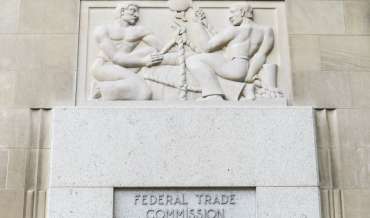The Third Circuit Court of Appeals handed down an unusual ruling in a Telephone Consumer Protection Act (TCPA) class action that managed to set conflicting precedents on autodialer claims. Ultimately, the court ruled in favor of the defendant in Panzarella v. Navient Solutions, Inc. but the specifics of the ruling could prove influential on future litigation.
The case involves 19 calls that Navient made to the mother and brother of a student loan debtor as part of efforts to collect on the debt. The plaintiffs alleged that Navient violated the TCPA by calling their cellphones with an automatic telephone dialing system (ATDS) without their consent. Of course, following Facebook v. Duguid, ATDS claims need to contend with the Supreme Court’s narrow definition of an autodialer as equipment with “the capacity to use a random or sequential number generator to either store or produce phone numbers to be called.”
The Third Circuit ruled in favor of the defendant, finding that Navient’s system was not an ATDS because it did not use its capacity to be an ATDS during the placing of the calls at issue. The court explained that an autodialer “must use its defining feature – its ability to produce or store telephone numbers through random – or sequential – number generation.” This does not follow previous rulings on the subject of capacity compared to use, but it does set a favorable precedent for future ATDS claims within the Third Circuit. Unfortunately, this is not the only potential precedent set by this ruling.
Navient’s system had two components: its dialing software and a server that managed the database of debtors to be called. The dialing software did not have the capacity to randomly or sequentially generate phone numbers to be called but the server managing the database did. In the course of arriving at its ruling, the Third Circuit made use of an unusually expansive definition of the word “equipment” that involved considering the database server as a part of the dialer. This does not follow previous court opinion on the subject and, if it serves as a precedent, could lead to a significantly wider range of dialers being classified as autodialers. Most modern dialing systems do not randomly or sequentially generate numbers but nearly any database program has the capacity to do so. If other courts follow the unusual precedent of considering a database to be a part of the dialing equipment, this could lead to disastrous results for callers.
Viewed from a narrow perspective, this ruling is favorable for callers within the Third Circuit because the court’s interpretation of use vs. capacity eliminates most modern dialing technology from being considered autodialers. More widely, the precedent is potentially disastrous for callers. If other jurisdictions follow the Third Circuit’s ruling on including databases as a part of the dialing equipment but do not follow its ruling on capacity, most modern dialing technology could be considered to be autodialers.





